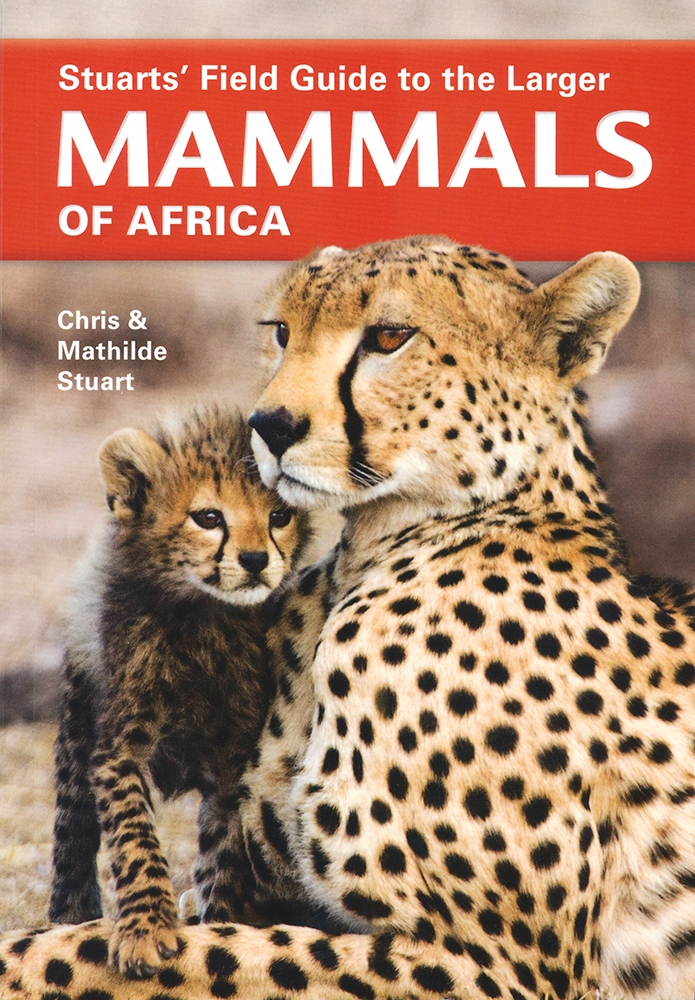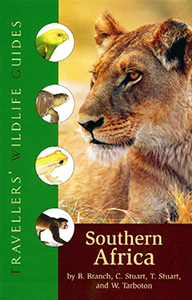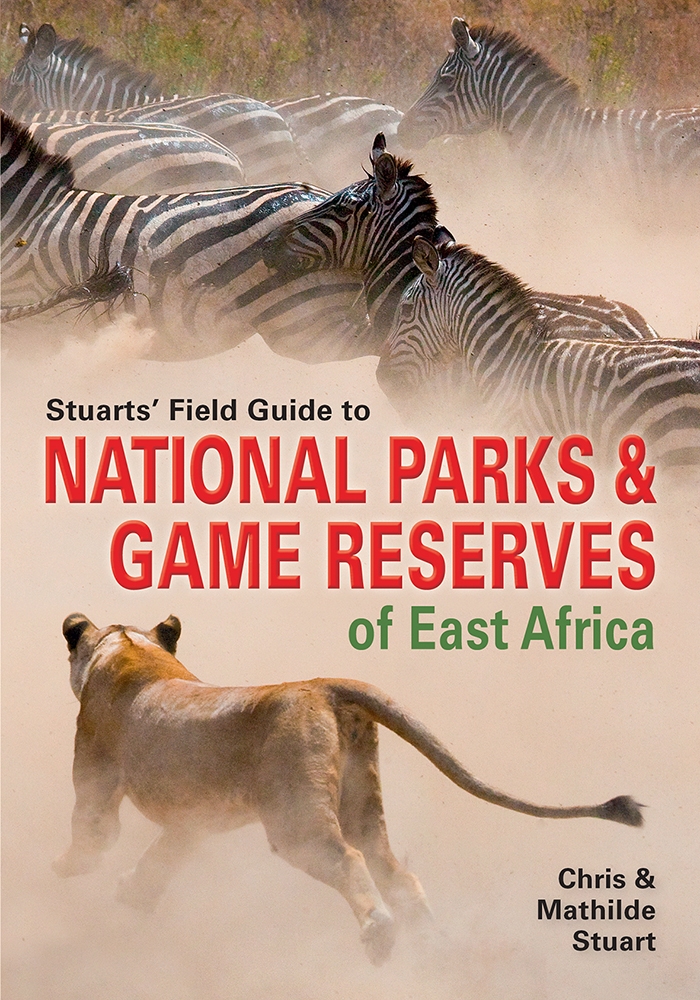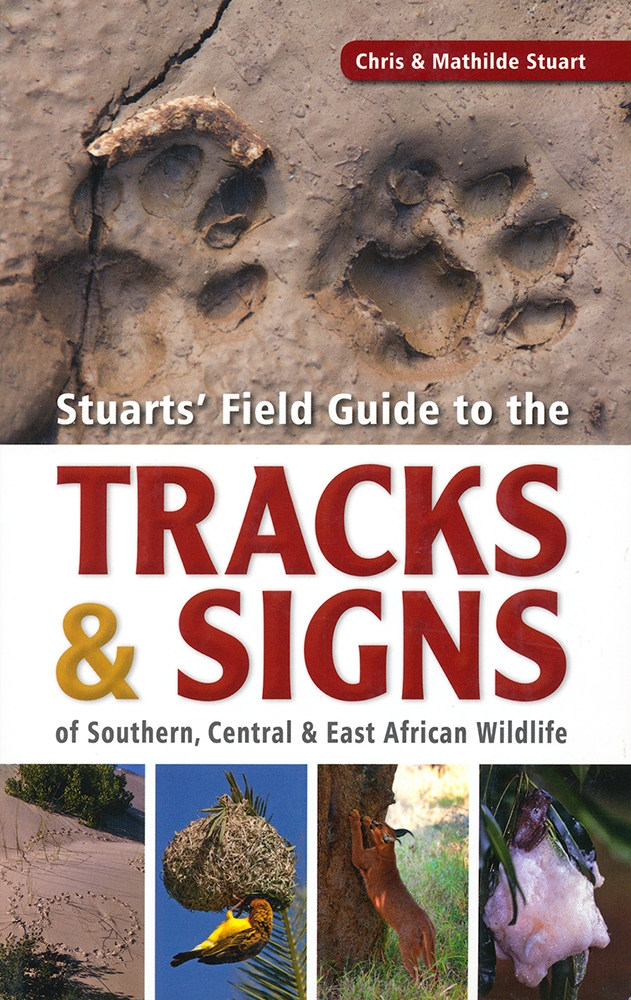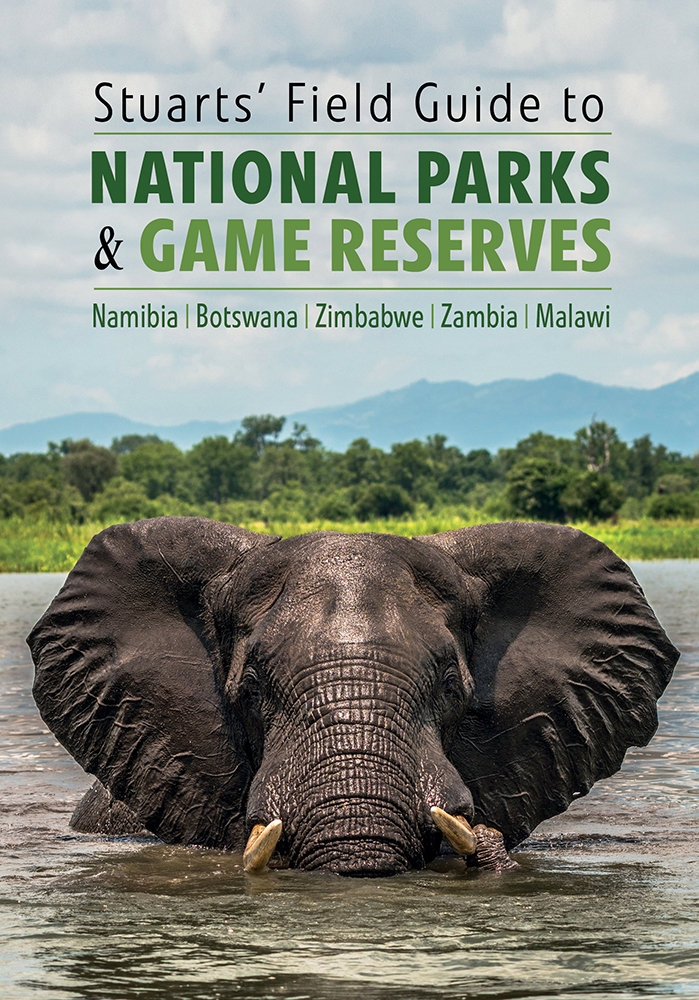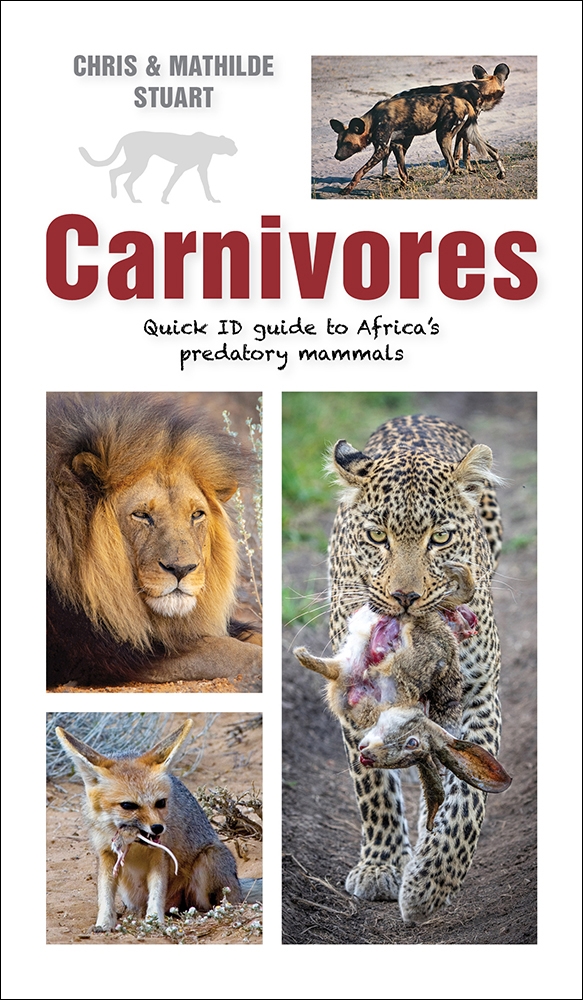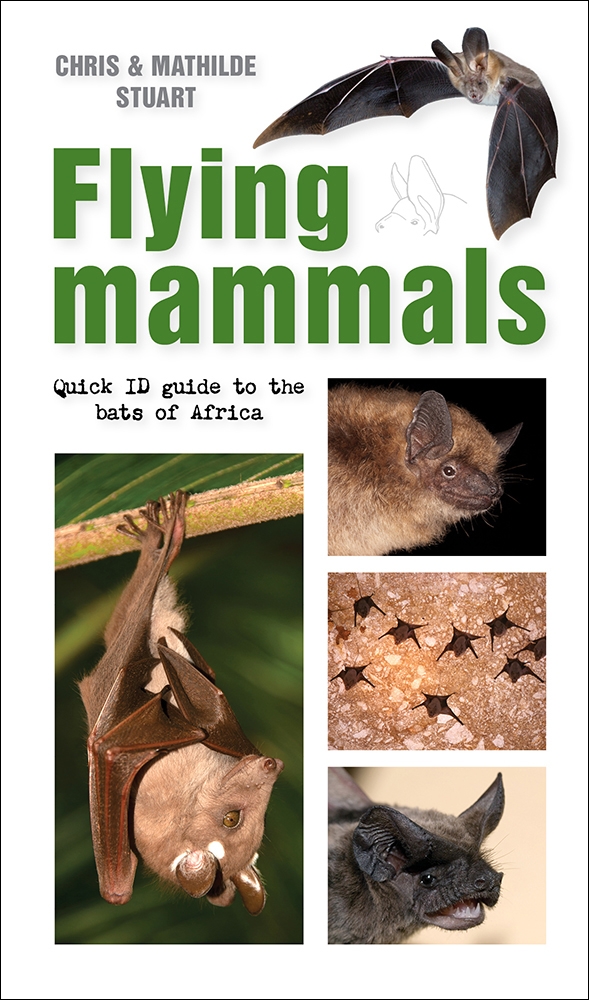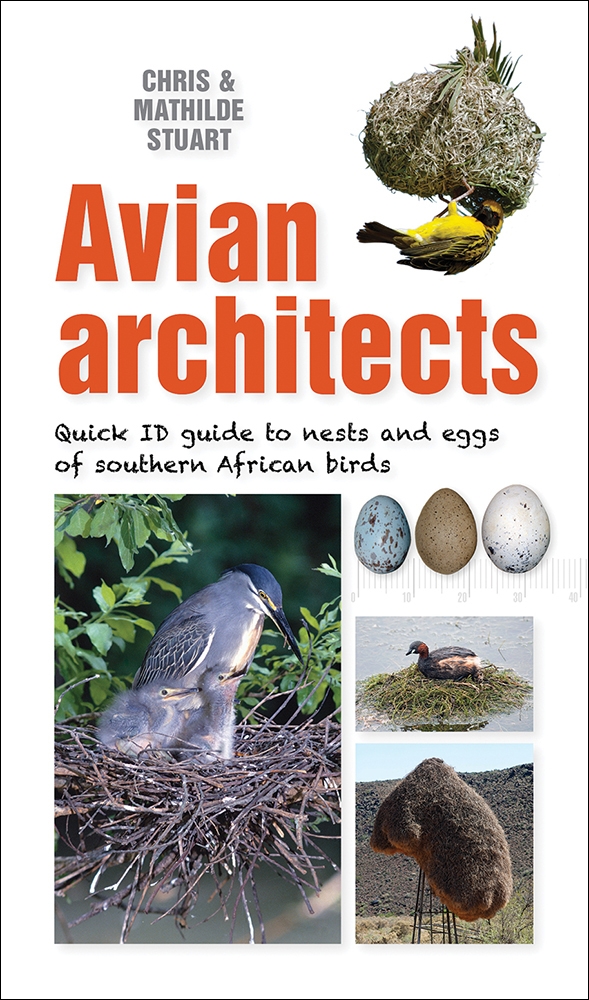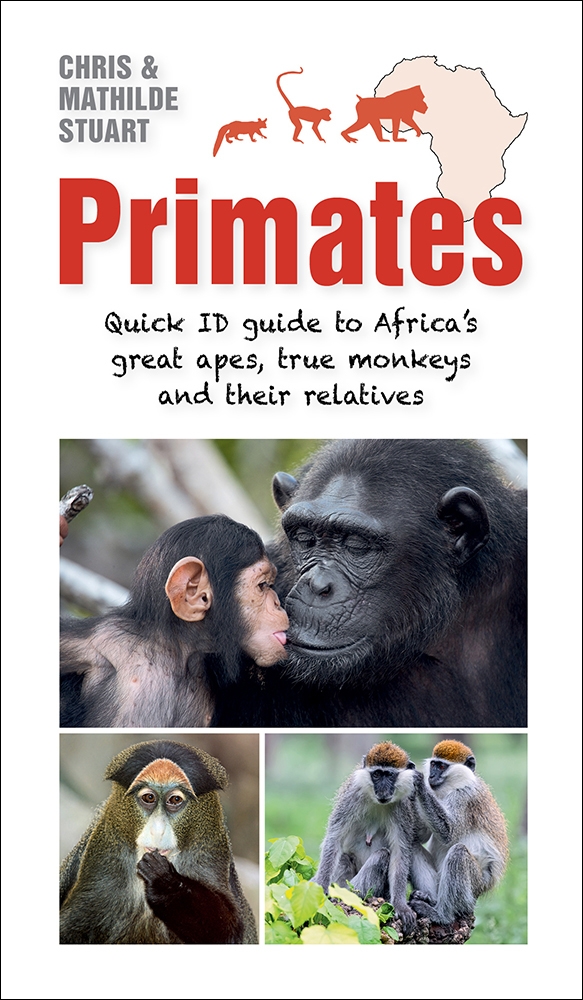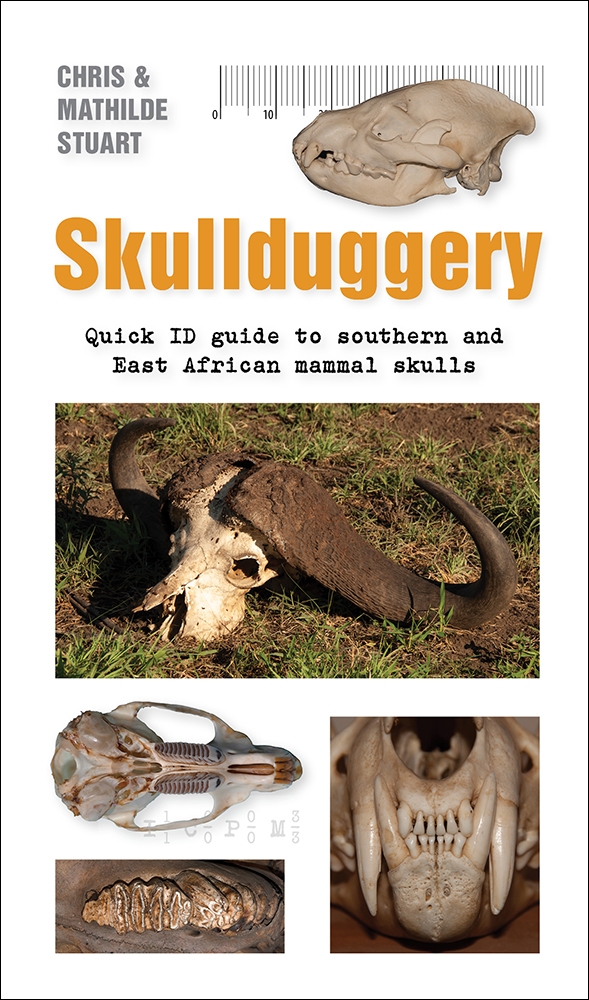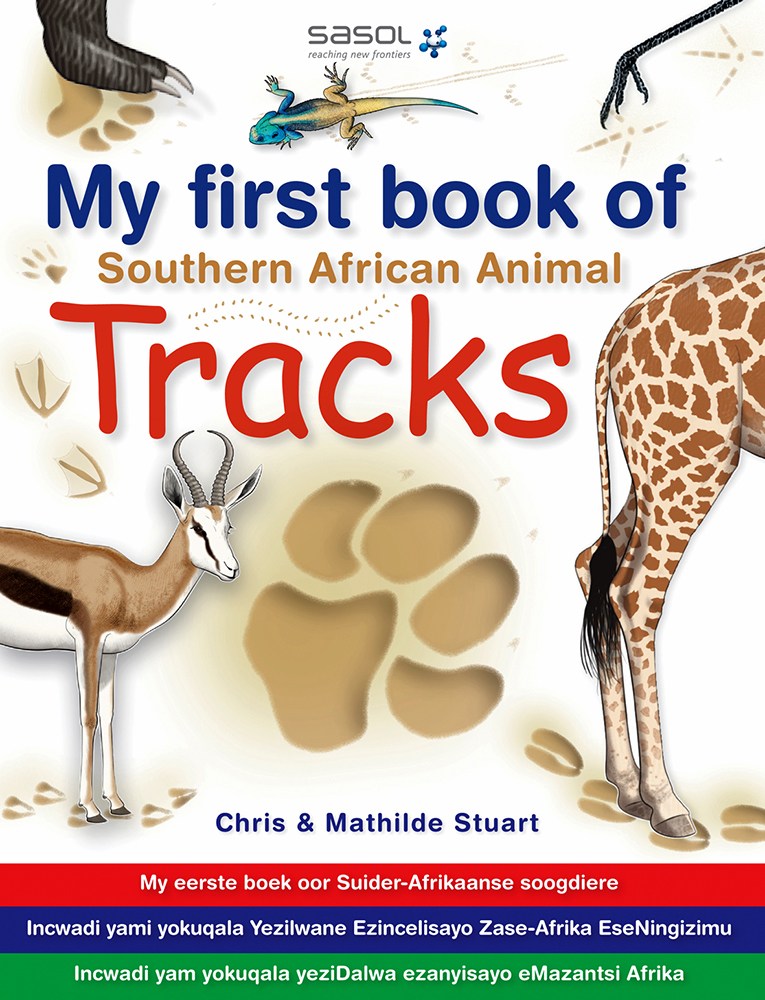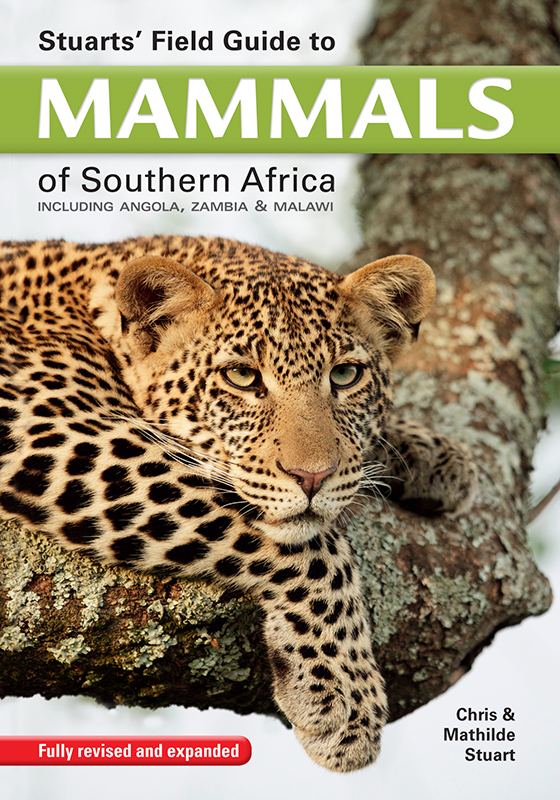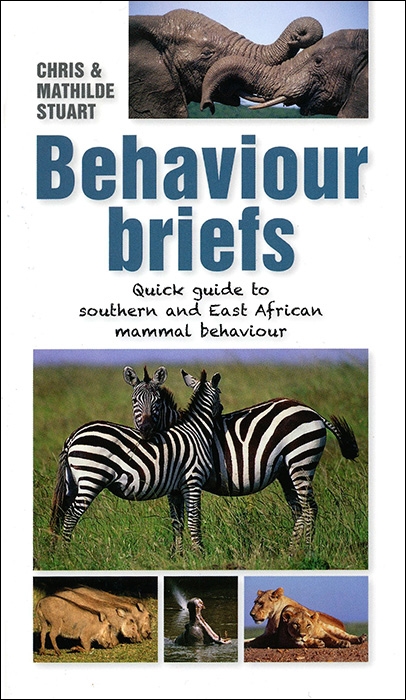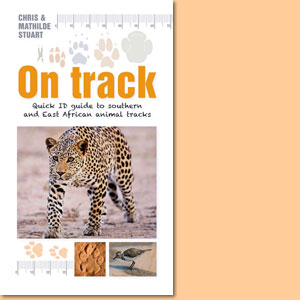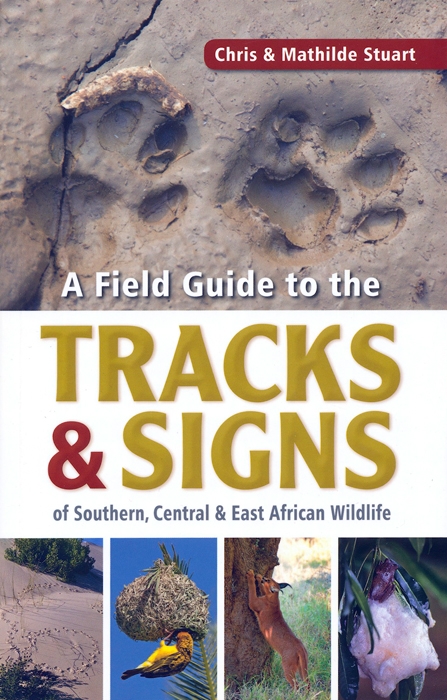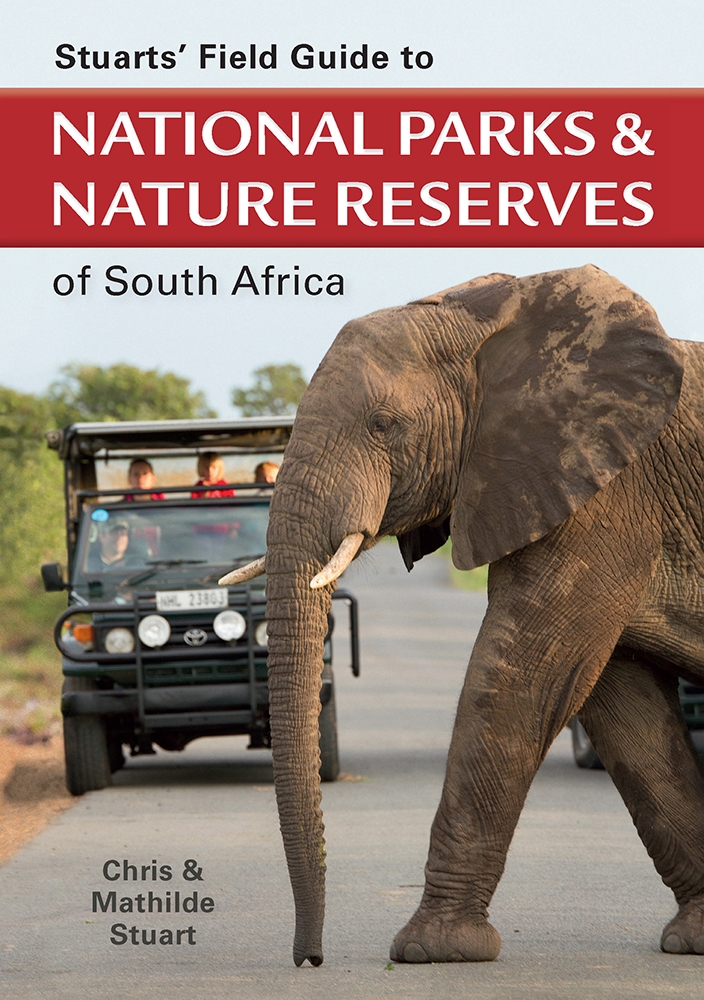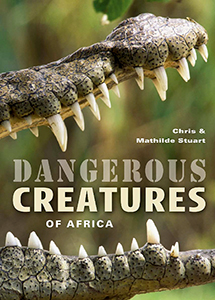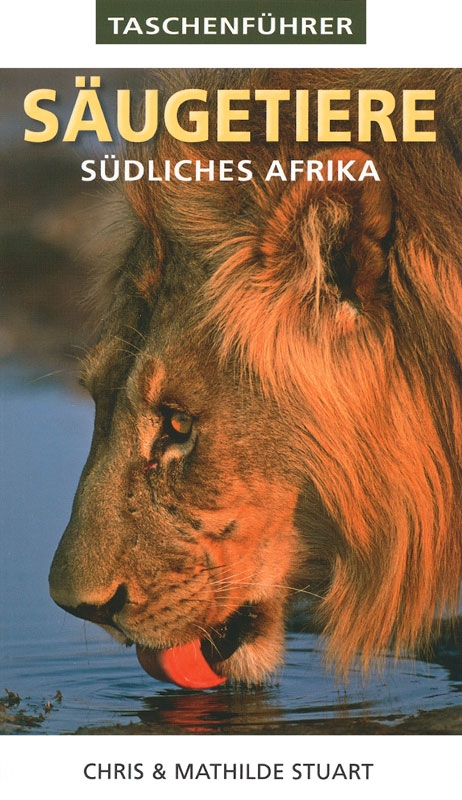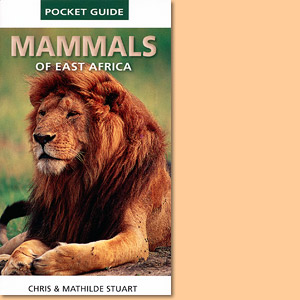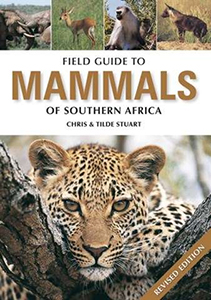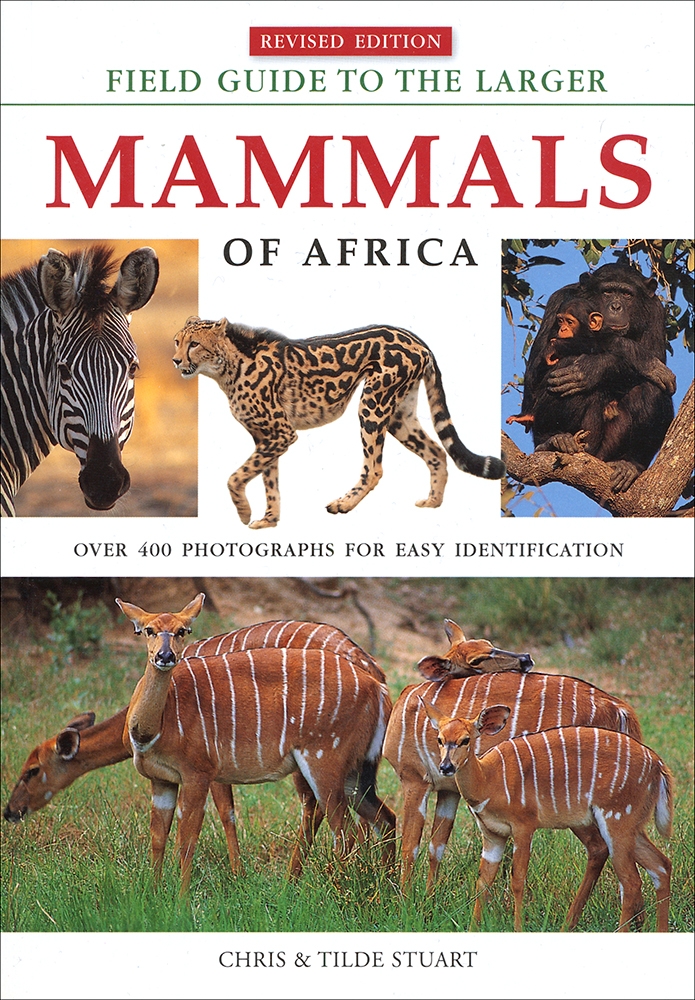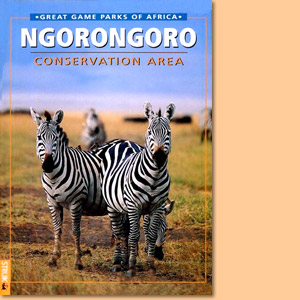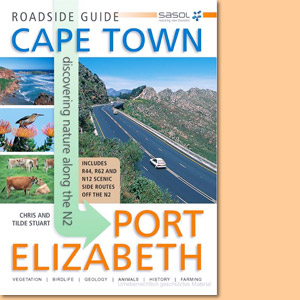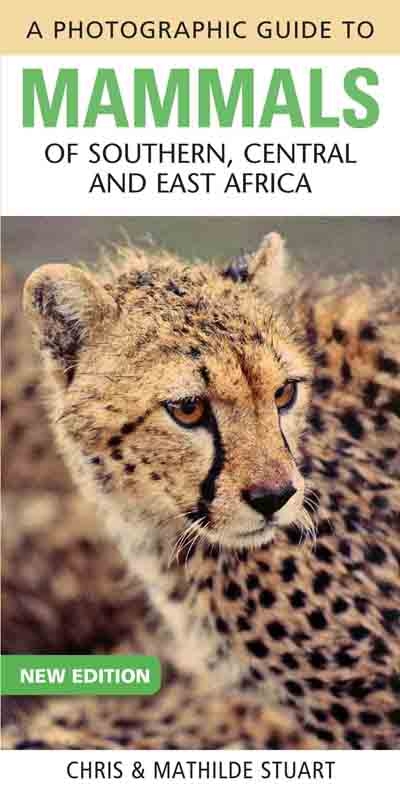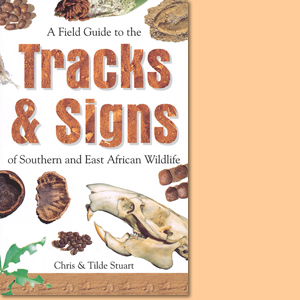Stuarts’ Field Guide to the Larger Mammals of Africa, by Chris Stuart and Mathilde Stuart
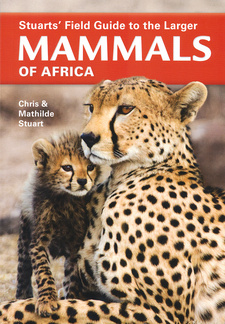
Stuarts’ Field Guide to the Larger Mammals of Africa, by Chris Stuart and Mathilde Stuart. Penguin Random House South Africa. Imprint: Struik Nature. Cape Town, South Africa 2019. ISBN 9781775842743 / ISBN 978-1-77584-274-3
As with most field guides, the purpose of Stuarts’ Field Guide to the Larger Mammals of Africa by Chris Stuart and Mathilde Stuart is to enable the observer to identify mammals observed in the wild.
All of the larger mammals have been covered, and within this definition is included a number of species that weigh between 80g and 1kg, but excluded are the bats and virtually all of the insectivores and rodents. The species in the 'smaller' category include those that are fairly frequently seen, such as the hyraxes, hares and rabbits, hedgehogs, giant sengis, gundis, ground squirrels, cane-rats, giant rats and springhares. The definition of'smaller' and 'larger' is totally subjective, as several of the antelope weigh less than 5kg, and some of the carnivores weigh less than 1kg, with a few, such as the dwarf mongooses, as little as 220g. Why, for example, have we left out the arboreal squirrels that range in weight from the 16g African Pygmy Squirrel to the African Giant Squirrel that averages 700g? With very few exceptions, they are seldom seen and are difficult to identify in their forest homes. Several species of root-rat (Tachyoryctes) and mole-rat (Bathyergus) can tip the scales at more than 900g, but these are subterranean dwellers that are very rarely found on the surface. Then there are the jirds (Meriones), grass rats (Arvicanthis), vlei rats (Otomys) and whistling rats (Parotomys), some of which may exceed 200g in weight. The reasoning behind selecting 'larger' mammals is that these are usually, but not always, easier to see, and are generally less problematic to identify.
Each species is discussed according to ten subheadings as follows:
Measurements: In most cases, a range of measurements is given, from lowest to highest, or alternatively, the average for that particular species. However, there will always be variation within a species. The most useful measurement in the field identification of the larger and medium-sized mammals is shoulder height. A useful method of learning to judge measurements is to cut pieces of wood into known lengths and place these at different distances. With practice, it should be possible to apply these estimates to mammals in the field. In the case of most antelope species, two horn measurements are provided: the average length, and the hunting record length.
Identification pointers: The main aids to identifying a species are highlighted.
Similar species: Where one species is similar to, or could easily be confused with another, their distinguishing features are mentioned.
Description: The descriptions concentrate on external features that will assist the observer to identify a mammal to species level. The following six steps will serve as a guide when identifying a mammal:
1. Decide to which group the mammal belongs. Is it an antelope, or does it belong to the dog or cat family, for instance?
2. Estimate the shoulder height and the total and tail lengths if possible. Is the tail shorter than the length of the head and body? Is the mammal roughly as tall as a Shetland pony?
3. Look for outstanding features. Does it have black or white stripes, spots or a bushy tail, or is the back arched?
4. Check the distribution map to determine whether the species occurs in the area.
5. Check the habitat preference of the mammal. You will not see a Klipspringer on the open savanna, nor a Cheetah in tropical forest. [...]
This is an excerpt from Stuarts’ Field Guide to the Larger Mammals of Africa, by Chris Stuart and Mathilde Stuart.
Title: Stuarts’ Field Guide to the Larger Mammals of Africa
Author: Chris Stuart; Mathilde Stuart
Publisher: Penguin Random House South Africa
Imprint: Struik Nature
Cape Town, South Africa 2019
ISBN 9781775842743 / ISBN 978-1-77584-274-3
Softcover, 15 x 21 cm, 456 pages, throughout colour photographs
Stuart, Chris und Stuart, Tilde im Namibiana-Buchangebot
Stuarts’ Field Guide to the Larger Mammals of Africa
Stuarts’ Field Guide to the Larger Mammals of Africa concentrates on the more visible and easily distinguished larger species.
Traveller's Wildlife Guide Southern Africa
Traveller's Wildlife Guide Southern Africa introduces 500 of Southern Africa’s most common amphibians, reptiles, birds, and mammals.
Stuart's Field Guide to National Parks and Game Reserves of East Africa
Stuart's Field Guide to National Parks and Game Reserves of East Africa provides an overview of some 58 protected areas across East Africa.
Stuarts' Field Guide to the Tracks & Signs of Southern, Central and East African Wildlife
Stuarts' Field Guide to the Tracks & Signs of Southern, Central and East African Wildlife, this is the 5th revised edition.
Stuarts' Field Guide to National Parks and Nature Reserves of Namibia, Botswana, Zimbabwe and Zambia
Stuarts' Field Guide to National Parks and Nature Reserves of Namibia, Botswana, Zimbabwe and Zambia.
Carnivores: Quick ID guide to Africa's predatory mammals
Carnivores: Quick ID guide is a compact and quick ID identification guide to Africa's predatory mammals.
Flying Mammals Quick ID guide to the bats of Africa
Flying Mammals Quick ID is a compact and quick ID identification guide to the bats of Africa.
Avian Architects: Quick ID guide to nests and eggs of southern African birds
Avian Architects: Quick ID is a compact and quick ID identification guide to nests and eggs of southern African birds.
Primates: Quick ID guide to Africa's great apes, true monkeys and their relatives
Primates Quick ID is a compact and quick ID identification guide to Africa's great apes, true monkeys and their relatives.
Skullduggery: Quick ID guide to southern and East African mammal skulls
Skullduggery is a compact and quick ID identification guide to skulls of southern and East African mammals.
My first book of Southern African animal tracks
My first book of Southern African Animal Tracks introduces 55 different types of animals and their footprints.
Stuarts' Field Guide to Mammals of Southern Africa
Stuart's Field Guide to Mammals of Southern Africa covers near to 400 mammal species including Angola, Zambia and Malawi since the 5th edition of 2015.
Behaviour briefs: Quick guide to southern and East African animal behaviour
Why do they do that and what next? Behaviour briefs is a quick guide to southern and East African animal behaviour.
On Track: Quick ID Guide to Southern and East African Animal Tracks
On Track is a quick identification guide to tracks of Southern and East African most commonly found mammals, reptiles, rodents, birds and insects.
A Field Guide to the Tracks & Signs of Southern, Central and East African Wildlife
Latest edition of A Field Guide to the Tracks & Signs of Southern, Central and East African Wildlife.
Stuarts' Field Guide to National Parks and Nature Reserves of South Africa
Stuarts' Field Guide to National Parks and Nature Reserves of South Africa offers a comprehensive overview of 43 parks, reserves and wilderness areas.
Dangerous creatures of Africa
The focus of Dangerous creatures of Africa is on understanding, identifying, avoiding and surviving these potential hazards of the African wilds.
Taschenführer: Säugetiere, Südliches Afrika
Der Taschenführer Säugetiere: Südliches Afrika, legt seinen Schwerpunkt auf die größeren, öfter gesehenen Tierarten, schließt allerdings auch einige ungewöhnliche Arten ein.
Mammals Of East Africa Pocket Guide
Mammals Of East Africa Pocket Guide covers all of the common and some of the less common mammal species.
Mammals of Southern Africa Pocket Guide
Authoritative and colourfully illustrated, Mammals of Southern Africa Pocket Guide offers concise information.
Field Guide to Mammals of Southern Africa
A total of 337 species are covered in this fully revised comprehensive field guide to mammals of Southern Africa.
Field Guide to the Larger Mammals of Africa
Field Guide to the Larger Mammals of Africa provides over 400 colour photos, with concise, pertinent information highlighting the diagnostic features of each species.
Ngorongoro Conservation Area
From the series 'Great Game Parks of Africa' this is a portrait of the Ngorongoro Conservation Area.
Sasol Roadside Guide. Cape Town-Port Elizabeth: Discovering Nature Along the N2
The Sasol Roadside Guide Cape Town-Port Elizabeth: Discovering Nature Along the N2 interprets the surrounding countryside - plants, birds, mammals, reptiles, agriculture, geology.
A Photographic Guide to Mammals of Southern, Central and East Africa
A Photographic Guide to Mammals of Southern, Central and East Africa introduces 152 mammal species of each family group.
Field Guide to Tracks and Signs of Southern and East African Wildlife
Related to Southern African and East African Wildlife, this great field guide is about their tracks and signs, like droppings, feeding signs, scent marks and others.

